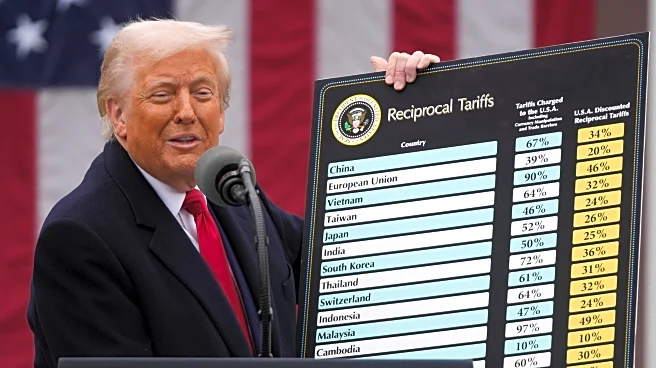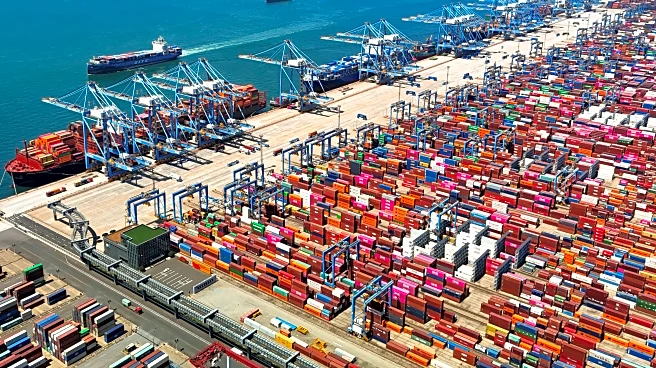What's Happening?
China has responded to President Trump's threat of imposing a 100% tariff on Chinese imports by urging the U.S. to resolve the issue through negotiations rather than threats. The tariffs are set to begin on November 1, 2025, unless further actions are taken by China. The tariffs come amid new Chinese regulations requiring foreign firms to obtain approval for exporting products containing rare earth elements, which are crucial for various technologies. China controls a significant portion of the global supply of these elements, making them a key point in trade discussions.
Why It's Important?
The imposition of tariffs and China's regulatory changes could have significant impacts on global trade and technology industries. Rare earth elements are essential for manufacturing advanced technologies, and restrictions on their export could disrupt supply chains and increase production costs. The tariffs could also escalate trade tensions between the U.S. and China, affecting economic relations and potentially leading to retaliatory measures. The situation underscores the importance of diplomatic negotiations in resolving trade disputes and maintaining economic stability.
What's Next?
President Trump is expected to meet with Chinese leader Xi Jinping in South Korea at the end of the month, which could provide an opportunity for dialogue and resolution. The meeting's outcome may influence future trade policies and economic relations between the two countries. Stakeholders in technology and manufacturing industries will be closely monitoring developments, as changes in trade policies could impact production and market dynamics.
Beyond the Headlines
The trade tensions highlight broader issues of economic nationalism and the strategic importance of rare earth elements. As countries seek to secure their supply chains, there may be increased investment in alternative sources and technologies to reduce dependency on Chinese exports. The situation also raises questions about the balance between economic interests and geopolitical strategies in international trade.













